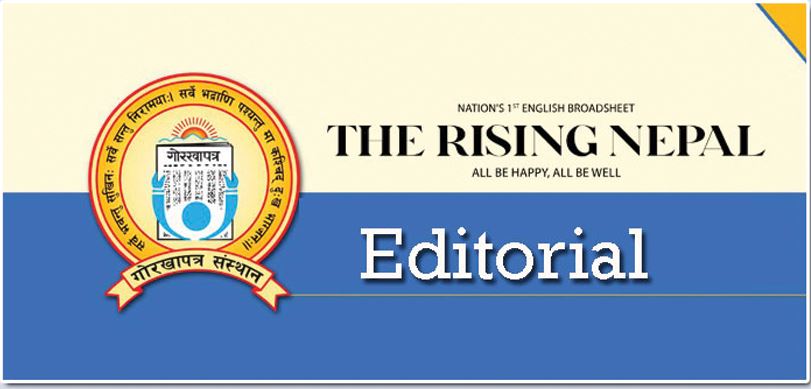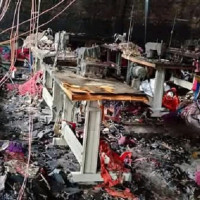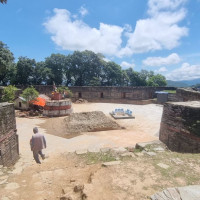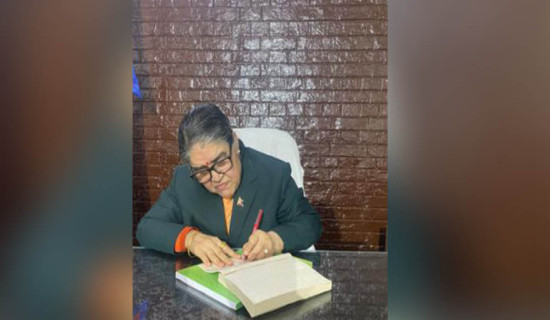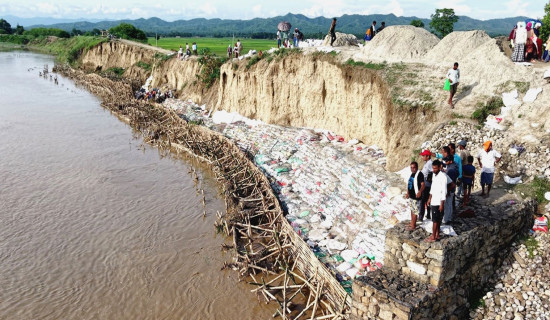- Wednesday, 16 July 2025
People's Sovereignty
The country is observing the Republic Day today (Thursday) amidst various programmes. This is a day when the Nepali people attained full sovereignty. Nepal’s democracy often faced a threat from the dictatorial monarchy and Nepalis decided to abolish it forever so that the country’s democratic journey would not suffer any disruptions. Now, the democratic consolidation is taking place smoothly and peacefully. Freedom, equality and dignity are what every human wants because they are prerequisites to attain happiness and prosperity in life. Freedom is essential not only in politics but also in an individual's life for his/her professional and intellectual growth. And the republican system creates a necessary atmosphere to enjoy freedom and pursue a life of one's choice.
On May 28, 2008, the first meeting of the elected Constituent Assembly (CA) declared Nepal a Federal Democratic Republic, abolishing the 240-year-old monarchy. It was a historic moment for the nation. It became federal from a unitary and secular from Hindu state. The declaration will go down in history as an unprecedented decision aimed at restoring stability, peace and inclusive development. The landmark political change took place against the backdrop of the successful movement that forced the then-monarch to surrender to the people’s mammoth power. The historic political movement became possible after the former Maoist rebels decided to join peaceful politics and forged an alliance with the pro-parliamentary forces to restore democracy.
In 2015, the second CA promulgated the new constitution that institutionalised the nation's transformation into a federal, secular republican system. Under the federal system, the three tiers of government have been created, which drastically changed the governance structures. Powers, rights and resources have been devolved to the provinces and local levels. Subnational governments have received rights to mobilise resources and create their own administrative structures, including civil services and police force, among others. Likewise, local bodies have become autonomous to generate and spend revenues at the grassroots level. They have been granted at least 22 rights in addition to concurrent rights, which they can exercise in collaboration with the centre and provinces. The federal system is based on the principle of shared rule and self-rule so that the people directly participate in decision-making and development works.
As the country is celebrating the Republic Day with enthusiasm and fervour, it is imperative to introspect on the performance of governments and political parties during this period. The question has been raised about the delivery of goods and services to the people. In the absence of jobs, many young people are leaving the country in droves. Still around 20 per cent of people are living below the poverty line. Moreover, a section of political parties and organisations have launched street protests to restore monarchy. In order to overcome the new challenges facing the republican dispensation, priority should be given to good governance, economic opportunities and quality education. Today's need is a clean government that keeps corruption at bay.
The constitution has spelled out at least 31 fundamental rights of the people, including the right to health, education, employment, food and social security. The government should enact the necessary laws to implement these rights. The problems seen in the implementation of the republican system should be sorted out through the amendment of the constitution. Monarchy cannot be the alternative to the republic that considers the people as the ultimate source of sovereignty. The republican set-up is perhaps the best form of government. It can always be made better, not replaced.

